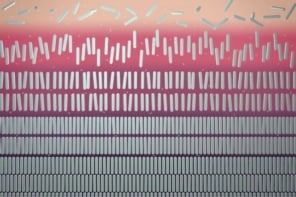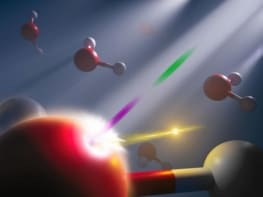A tennis ball rolling slowly towards a football might not disturb it very much - but throw the tennis ball quickly and you would expect a bigger reaction. On the microscopic scale, however, particles behave differently. Thomas Kunert and Rüdiger Schmidt of the Technical University of Dresden, Germany, calculated what would happen when carbon-60 molecules - or fullerenes - are bombarded with a selection of smaller ions. To their surprise, the velocity of the 'missiles' made no difference to the amount of energy they imparted to the target molecules (T Kunert and R Schmidt 2001 Phys. Rev. Lett. 86 5258).
We are familiar with the concept of ‘stopping power’ in the macroscopic world. The energy an object loses when it collides with another object is directly related to its velocity and the distance its travels through the target object. Kunert and Schmidt used a technique known as nonadiabatic quantum molecular dynamics to study the collisions at the microscopic level. They fired protons, carbon ions and argon ions – in order of increasing mass – at the fullerene targets. Measurements of the resulting excitation of the fullerene molecules revealed how much energy the impinging ions had imparted to the larger molecules.
As expected, the amount of energy the fullerene molecules absorbed was closely related to the mass of the incoming ions and – up to a certain threshold – their speed at the point of impact. But above a certain impact velocity, the mass alone determined how much energy was imparted. Kunert and Schmidt found that argon ions travelling at velocities that differed by a factor of 20 delivered identical quantities of energy to the fullerene molecule.
Kunert and Schmidt also noticed that the energy caused vibrations in the fullerene molecule at the lower velocity, and electronic excitation at the higher velocity. Unusual fragmentation patterns observed in other experiments could be explained by this transition from vibrational to electronic excitation. The Dresden team believes that the different processes of excitation cause the large particle to break up in different ways.



